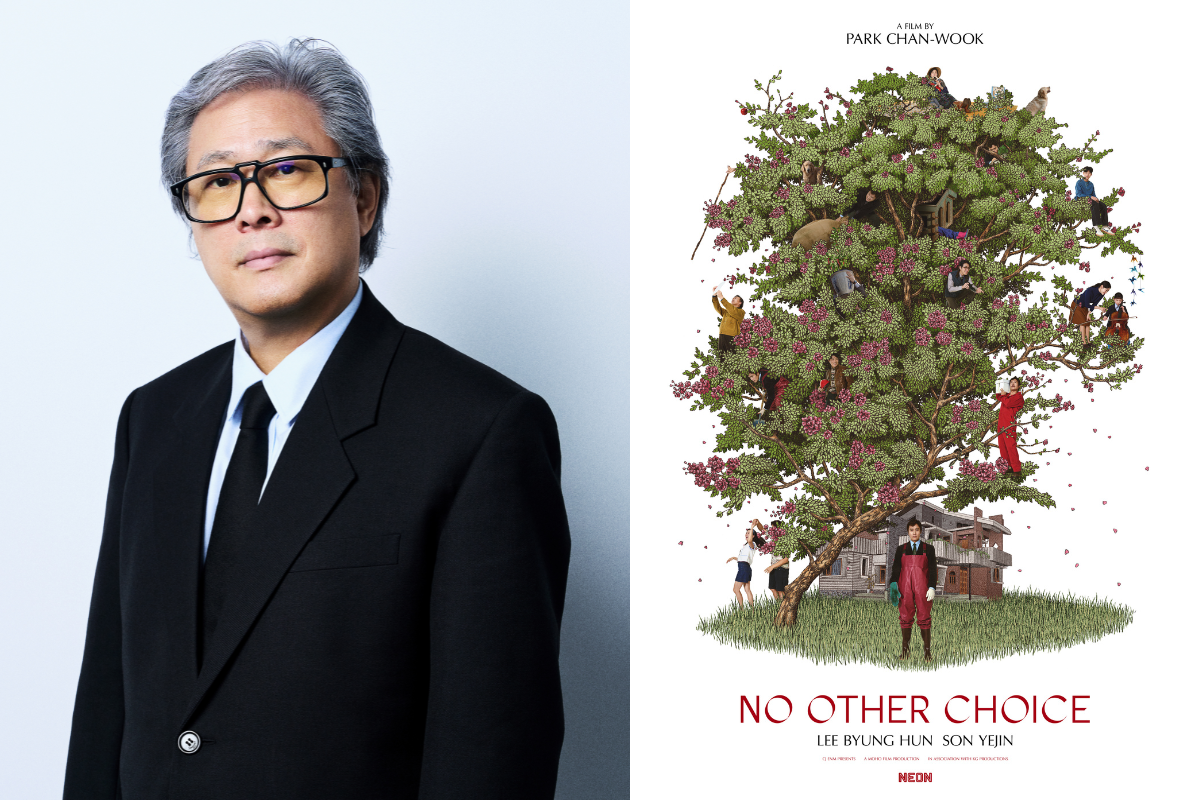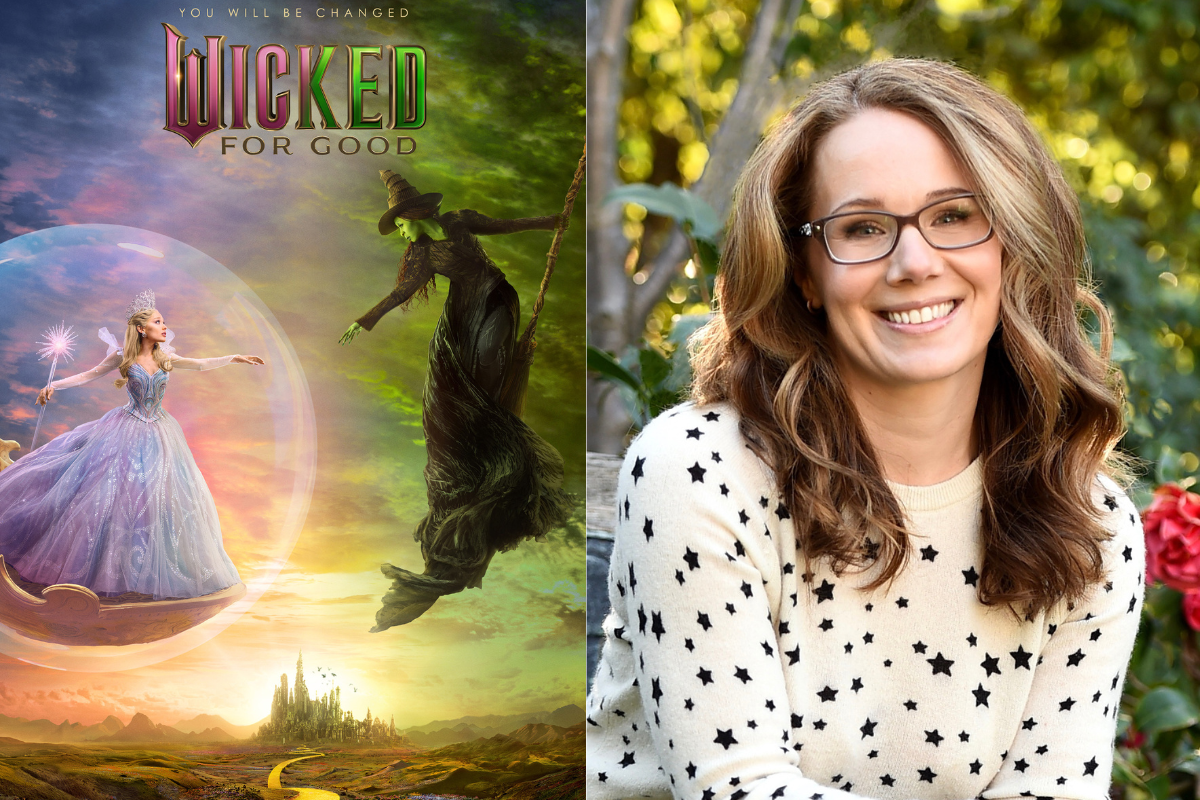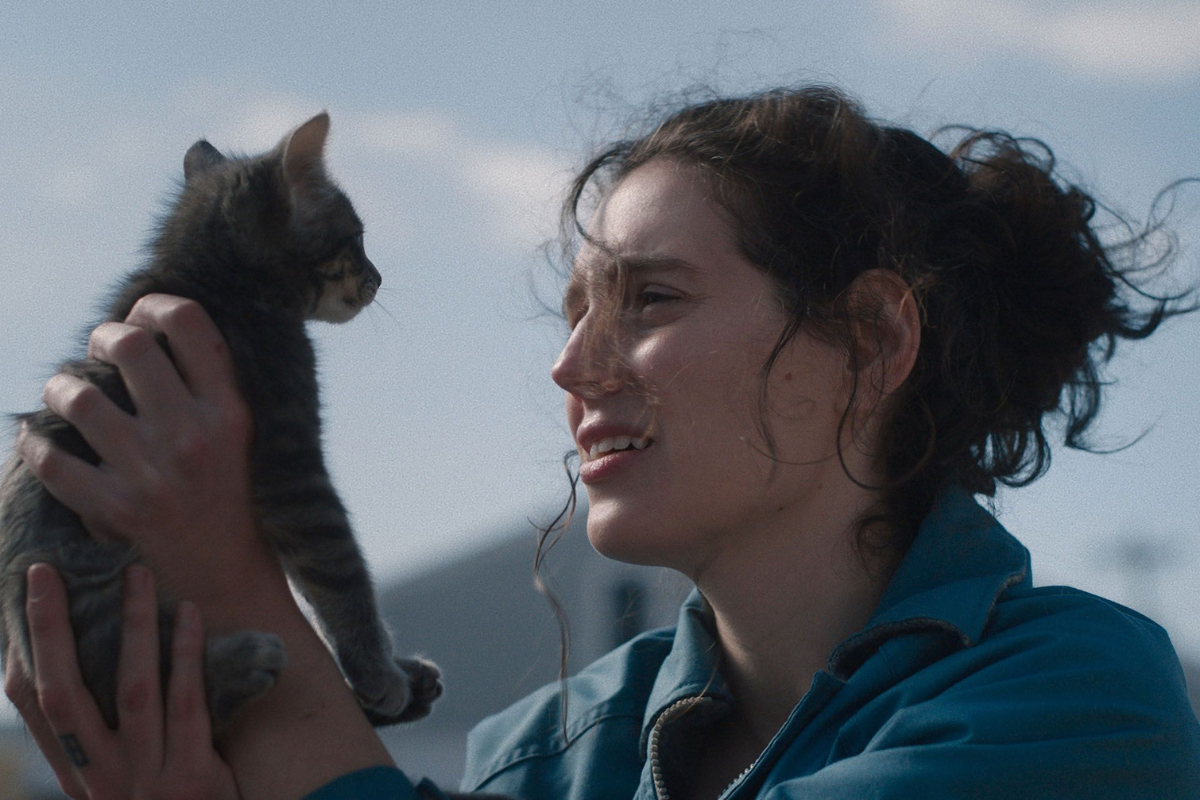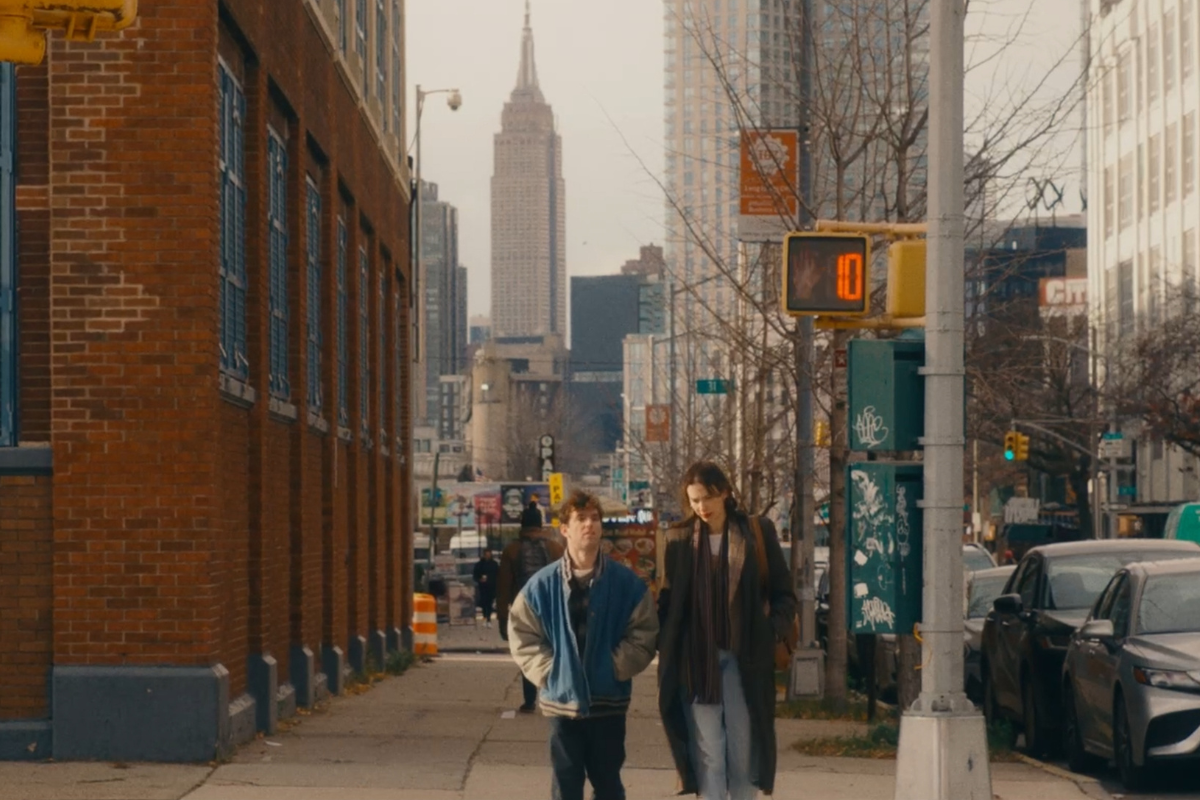INDIE SPOTLIGHT: Interview with ‘Bad Things’ Horror Writer-Director Stewart Thorndike
Stewart Thorndike discusses why motherhood is a theme she’s drawn to as a storyteller, the importance of location, her collaboration with her tight-knit team, and the challenges and creative liberation of working with an ensemble cast.
When a group of friends escape the city to spend the weekend in an abandoned hotel, a pervading eerie energy begins to illuminate the cracks in their little family unit. Ruthie Nodd (Gayle Rankin) inherits the hotel from her grandmother and with bad childhood memories threatening to burst to the surface, Ruthie wants to sell the hotel and never return. But her partner Cal (Hari Nef) drags her there in the hopes of returning it to its former glory. They are joined by their amiable friend Maddie (Rad Pereira) and mysterious grifter Fran (Annabelle Dexter-Jones), whose unhinged seduction threatens to drive a wedge between the couple. As the friends dance, cook, flirt, and fight up and down the halls of the hotel, they begin to find themselves indelibly entwined in the hotel’s seductive embrace and start doing bad things to each other.
There is quite a lot to unpack while and after watching Bad Things. Deep thematic elements tied to motherhood, horror elements that are both subtle and nuanced, and an ensemble of characters that independently hold their own while navigating their relationships with one another in this contained horror film.
The film is written and helmed by Stewart Thorndike - a filmmaker on their own unique journey, as she tackles the power of motherhood over the course of three films, the first being her 2014 horror-drama feature, Lyle.
Stewart Thorndike recently spoke with Script on the heels of her horror film Bad Things premiering at the 2023 Tribeca Film Festival. Stewart gives further insight into why motherhood is a theme she's drawn to as a storyteller, the importance of location, her collaboration with her tight-knit team, and the challenges and creative liberation of working with an ensemble cast, the intention behind camera movements, and so much more.
This interview has been edited for content and clarity.
Sadie Dean: After reading your director’s statement, you mentioned that this film is is part of a trilogy, and that you’re exploring the power of motherhood. I'm just so curious about your perspective and why you're drawn to that theme and also framing that in the horror genre.
Stewart Thorndike: I feel pretty religious about motherhood. [laughs] To me, it's like the first relationship, the main relationship, the first heartbreak, and it has this power and kind of spiritual terrifying, presence and impact and on me. And I think I would argue that maybe everyone, forget God, think about mom. I think that it always starts someplace really personal for me – stories. And you're sort of a little out of control and compelled to make things, which is where I love to be as an artist is to not completely understand what I'm doing as I make it and then you really start to understand the politics of it and the meaning of it as you go. And then after you've made a second film, it becomes even clearer. And that's really about kind of communing with the world and hearing what people say and learning about your own project as you go.
But yeah, I started the first one, Lyle, it came out of me. I was going through a tough time with my girlfriend at the time, who plays June in the movie, Ingrid Jungermann, who's also a filmmaker, a really great filmmaker. And I wanted really to have a kid and motherhood was already a theme in my life. But this was really a personal story about me, do I have a right to have a kid or not? And the terror of that and the ambiguity of it.
And then my second film Bad Things, looks at it instead of wanting to be a mother and that role and how it sits inside of a relationship, and about your relationships being impacted by your mother, even if she's not in the picture. And I knew I needed someone godly and magnificent, and Molly Ringwald was just a dream. She does all that. And then the third film is something totally different, which is, what if you were the perfect mother, you were trying to be the perfect mother and realize a little too late, like, 'Oh, maybe I've done this all wrong.' And the horror of that. There's so many layers to that, too. So that one's called Daughter.
Sadie: That's so fascinating, especially because with films, the last 100 years now, we usually see the perspective of the son and mother relationship, and not necessarily the nuances of daughter mother relationships. With this film, you amplify it to it’s rawest form, and how unpack that is incredible. There’s two films that came to mind while watching this, and I'm glad that they exist, Bong Joon Ho's Mother, which is a thriller, but it's that dynamic, right? And then something like Sinatra's Manchurian Candidate, and there’s that son-mother relationship and how she has a stronghold over him on that.
Creating Time and Space with ‘They Cloned Tyrone’ Filmmakers Juel Taylor and Tony Rettenmaier
Stewart: Holy moly. That's so funny that you bring up Manchurian Candidate because it's true. And oh my god, the remake. I really love too. [laughs] Meryl Streep crunching on ice. I love that film, actually. That is a really good example that I hadn't thought of a mother controlling everything. We get a lot of body horror. Which I love. But I'm more in the head than I am the body. It's not about the toll that it takes. It's more about the psychological spiritual horrors there.
Sadie: Before we get to talking about the specific characters, which I absolutely love, but the location as a character. Essentially, I feel like this hotel is the womb of Ruthie’s mother that Ruthie does not want to go back into for many reasons. How you were able to basically do this as a contained horror in this one location? Had you already scouted this location before or did it just happen to work out?
Stewart: I feel like the location found me. [laughs] I was looking for the perfect hotel for so long. Everywhere I was going, every hotel I'd ever see, I was looking for the right one. And it seems like there's the old spooky cobwebby ones that are kind of dying out. And then there's the kind of Residence Inn sterile family-friendly franchise look. And neither one was right for my film.
And then during COVID, I'd stop and look at hotels, and there was just one, and it looked closed down. So, I just taped up a note, 'Hey, I'm looking for a location, call me back.' And a month later, I get a call. And it's been closed down for COVID. And Becky was open to letting me check it out. And as soon as I stepped inside, I was spellbound. And it had this really feminine energy - whatever that means - it just felt outside of so many things in the world. And it wasn't antique, it was like 90s or 80s. And I knew it had to be there. And I also incorporated - the hotel kind of spoke to me and I changed a lot of the script for the hotel.
Sadie: That's amazing. I love how that works out.
Stewart: I think I should talk as a director and not as a writer to honor the strike, which I'm 100% pro labor movement and very empowered and excited about it. So as a director, the rooms really helped me shape where the camera was gonna go, and how the story would unfold with people standing in it, like that circular room, you're just like, 'Oh, that's so special.' And it has to be the spot.
Sadie: You had also mentioned that this story is like The Shining but from the queer-fem perspective, but even down to just camera movements that I had observed are very reminiscent of how Kubrick moves a camera and where the camera is positioned in a room.
Stewart: Yeah, it's so funny, what is intentional and what isn't. Call me naive, but I didn't even think about the twin thing with the models until after I'd made the film or maybe when we were casting. And then also, someone pointed out that when Hari [Nef] pauses outside of a room to look at a chair that she likes, but it's room 237, I never even saw that. [laughs] I don't think specifically I was ever thinking about the camera moves and Kubrick, but he's such an important filmmaker, that he's in my bloodstream.
I tend to put things at your natural eye line and not very often deviate from that. And I really like the camera to be moving and having its own agenda. It's kind of a step ahead of everybody. It knows when things are gonna get serious, or when there's trouble brewing, or when you should look over there before anybody else does.
INDIE SPOTLIGHT: Interview with 'Sympathy for the Devil' Director Yuval Adler
Sadie: It does help dictate how you're going to feel in that moment in that scene. Even with your DP and your production designer, just what you're showing or withholding from the audience is well done. In terms of characters, how did you come upon this rag tag gang, yet make them individuals that feed into Ruthie’s journey at this hotel?
Stewart: Well, putting together an ensemble is a challenge. They create their own energy together, which is unique. So that's really interesting. And I hadn't understood that before I was casting this. And really, it was just about understanding the quality. So, it wasn't like there was a type in mind or even an age, but a quality that they had and finding that match of a quality and massive, intimidating talent, which we got with each person.
And then directing and listening to them, because there's a lot of background that went into everything. And there's a lot of development in the character that just happens, and where they put their sweater in the room or how they dress and what their favorite socks are. And when Cal has decided to wear Ruthie's jacket, and they're kind of switching clothes, so there's a lot of biography and development just in that stuff. And the actors were just all mega talents who are able to bring a lot of that into the character, and world.
Sadie: Diving into just the tonal consistency, what was that collaboration process like with your DP Grant [Greenberg], Amy [Williams], your production designer?
Stewart: Grant is a dream collaborator, a storyteller, he has wonderful ideas. I have to bring in Nell [Simon] too, the costume designer, because those three are just so integral as department heads. I mean, everybody, the casting director, my producers are real artists and storytellers. But I think we all got shepherded together, we went to the hotel for a month before we started shooting. I remember just going through rooms and Amy the production designer being like, ‘That vagina carpet color.’ And then Grant and I say, ‘Mirrors here,’ and ‘this can't be their room.’
But I think for me, it's always story. Whether I'm talking to the production designer, Amy knows story. Amy is an artist. Amy builds worlds and I mean I always make everything with her. I will always make everything with her. I love working with Amy. Grant as well. He's a real storyteller. My producers are storytellers. Don't overlook my costumes with Nell because that's story. How do you make things feel real? You brought up the word cohesion, and that is really it, right?
So, these things all need to fit together too. There's like a harmony that starts to happen with an alchemy that starts to happen with everything - with everybody. That's what you're searching for. And it can go off-kilter with just the wrong thing. It's hard to do it.
Sadie: I keep thinking of just the brightness of this, like snow outside versus what you have color-wise inside. And when you do go outside, it’s pointed and intentional. I hope you keep making movies with this team.
Stewart: It's also very hard to hold on to. Like, you bring up the brightness. And it doesn't look like a traditional horror film, some might say. And how you do hold on to that? And because it's delicate. When I first started making movies, it was a real boys world, a white straight boys world. And I was always told, ‘No, you can't do things like that.’ Even like our beautiful fight scene, which I don't know how to do a fight scene. For me, it's more about the emotion and how somebody's reacting to a fight. That's interesting to me. But we even our stunt person and our study cams were really able to understand, ‘Oh, so a little different.’
Fear as a Subject: A Conversation with 'The Horror of Dolores Roach' Creator and Writer Aaron Mark
And Grant is gay, and my producers are women. And everybody really protected me and helped find that, even when it felt like it was going off the rails. And I think it's really hard. You get crushed a little in the beginning. And I always feel like, you kind of taste misogyny in its clearest form on a film set. So, when things things are scary on a film set, and there's a lot of money and people's time and everybody's been waking up at five and then who trusts whom, and when and how, and how do you keep making everybody trust you.
Sadie: Any advice for any filmmakers who are kind of on the same trajectory as you, that are female-identifying independent filmmakers who are into very genre-specific films like horror?
Stewart: Well, I don't have advice, I have a plea, which is just we need more voices! And we need everybody to be telling their stories. And we need all those groups to be making nutritious, challenging, daring horror. It's like our battle - we have to. So, I would say hold on, it's delicate what you're trying to say, and trust that and keep making bad stuff until you make good stuff. [laughs] And don't let people tell you your stuff is bad. Because sometimes the bad stuff is what is working. That's such crazy advice, but I guess it's just we need our stories.
Sadie: I totally agree. It's one of those things when people tell you, ‘No you can't’ it’s like you’re getting permission that you can, and you just do it anyways.
Stewart: Oh, well, that's really probably better advice. It’s hard because it's a machine to make films out there. That's what everybody is striking against. When I stopped being cynical because I was working so hard to make films, and I was just getting ‘noes’ I realized, ‘Well, I can keep making movies. I can do it.’ It might be slow. But you can do it. Nobody can take that from you.
Bad Things will be available on Shudder and AMC+ on August 18, 2023.
Sadie Dean is the Editor of Script Magazine and writes the screenwriting column, Take Two, for Writer’s Digest print magazine. She is also the co-host of the Reckless Creatives podcast. Sadie is a writer and filmmaker based in Los Angeles, and received her Master of Fine Arts in Screenwriting from The American Film Institute. She has been serving the screenwriting community for nearly a decade by providing resources, contests, consulting, events, and education for writers across the globe. Sadie is an accomplished writer herself, in which she has been optioned, written on spec, and has had her work produced. Additionally, she was a 2nd rounder in the Sundance Screenwriting Lab and has been nominated for The Humanitas Prize for a TV spec with her writing partner. Sadie has also served as a Script Supervisor on projects for WB, TBS and AwesomenessTV, as well as many independent productions. She has also produced music videos, short films and a feature documentary. Sadie is also a proud member of Women in Film.
Follow Sadie and her musings on Twitter @SadieKDean







